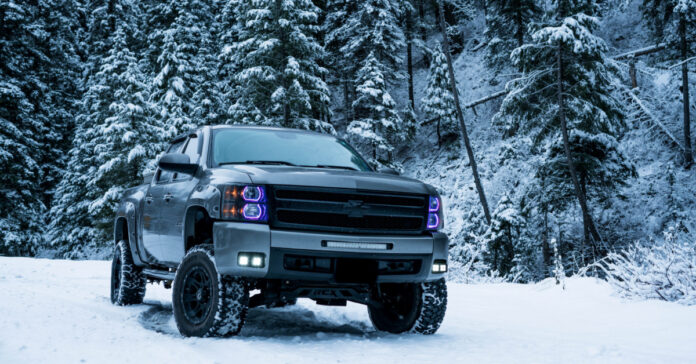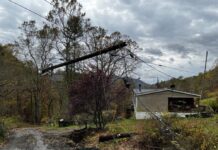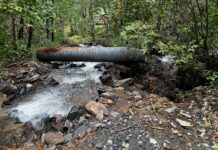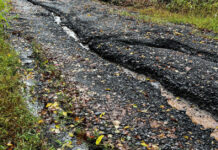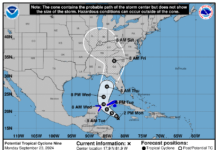I’ve been working on my Homestead Defense Bag (HDB) and my caches so much lately, that I had to remind myself not to forget making winter preparations for our vehicles.
While I hope to never need my HDB or my vehicle winter survival kit, the chance I’ll be stuck on the side of the road in the cold is higher than the chance I’ll be running away up the mountain shooting pursuers who are intent on killing me and taking all my preps. While both are survival situations, the former is a short-term one that happens to people every winter, while the latter implies much more has gone wrong with the world.
Thus this reminder: While we all prepare for the collapse of society, the use of nuclear weapons, the Chinese invasion of Taiwan, the global food shortage, or other world-ending disaster du jour, let’s not forget we have to face small, local, day-to-day emergencies far more of than we must face world-spanning disasters that forever change the face of society. Either one can kill you, so don’t ignore the small stuff.
Winterizing Your Vehicle Emergency Kit
My car kit includes a first aid kit with tourniquet and blood stopper, flares, flashlights, tire repair kit (including a tiny 12-volt air compressor), duct tape, fire starter, food, tow strap and rope, work gloves, hatchet, and a sports bottle with a built-in water filter. In the winter, I add a wool blanket, a GI casualty blanket, cold-weather gloves, a knit cap, thick wool socks, and an old insulated sweatshirt. I am almost always wearing boots, but if I am wearing dressier shoes for some reason, I usually toss my boots in the back. This is even more important if winter weather is expected.
Speaking of winter weather, my kit includes a shovel, a large ice scraper with a brush and a quart-sized baggie of kiln-dried wood that can us used to start a fire. This wood is so dry a single match will ignite it. No tinder needed. Fire can be used to warm a packet of Lipton chicken noodle soup, a pouch of oatmeal, or a cup of hot chocolate in your canteen cup, all good things to have in your winter survival kit.
Fire is also an excellent way to send up a signal if you get lost or trapped in the backwoods. Once it is clear enough to for search and rescue aircraft to take to the skies, a smoky fire encouraged by some pine tree bows can help them pinpoint your location. Of course, for them to search for you, someone has to know you are missing.
Gunfire can also be used to attract the attention of searchers. If you are stuck in the wilderness and hear dogs baying or distant voices, fire (in a safe direction) three shots spaced slowly and evenly apart. Three shots are a sign of distress, much like SOS used to be.
Water
I generally carry four water bottles in my vehicle, one in the holder on each door, but I step that down to one or two in the winter so I can better manage them. Water bottles freeze in the cold, which can crack the plastic. When things thaw out, you’ll find yourself wondering where the wet spots and soggy carpet in your car came from. I get around this by using bottles with sports tops and not filling them all the way. I open the top and tip the bottle at an angle. This gives the water plenty of room for expansion and allows the air, which contracts when it gets cold, to flow in and out.
While we all know water is important on hot summer days, it’s important to stay hydrated in the cold as well. That’s where the fire and a mess kit or canteen cup can come in useful because you can melt ice.
Because we prep in layers, my everyday carry items, which include a knife, pistol or two, spare ammo, cash, credit cards and a phone, compliment those items in the vehicle kit. On most car trips, I throw my EDC backpack in the vehicle. It includes water, snacks, first aid gear, pen, paper, spare batteries for my flashlight. This gives me the capacity to add parts of my vehicle kit to the pack and hike out if necessary.
Winterizing Your Vehicle
If you live in the great white north, as I used to, you will want to put on snow tires as soon as the law allows and consider investing in a pair of chains. If you have four-wheel drive, which I would encourage, then four chains will give you even better traction. Back in the day, I would use a lighter grade of motor oil, but I’m not sure if that is still recommended, so check with your local mechanic.
You’ll also want to take of basic things like making sure you have plenty of wiper fluid and your antifreeze is rated to -40°F. I usually don’t change my wipers until after the winter because the ice on your windshield can destroy them, but I keep a spare set under the seat just in case. Likewise, if you think you are going to need a new battery soon, consider replacing it before winter. Starting a car at 12° requires a much stronger battery than starting it at 72°.
Keep Small Emergencies from Growing
When you’re stuck in a parking lot with a dead battery or flat tire as the snow begins to pile up or have slid off the road and can’t get out of a ditch, it can seem like an emergency. If you are prepared and keep your head about you, these minor emergencies are easily managed without the situation getting any worse. Having a good winter survival car kit will make it less frightening and keep a small emergency from growing into a large one.

